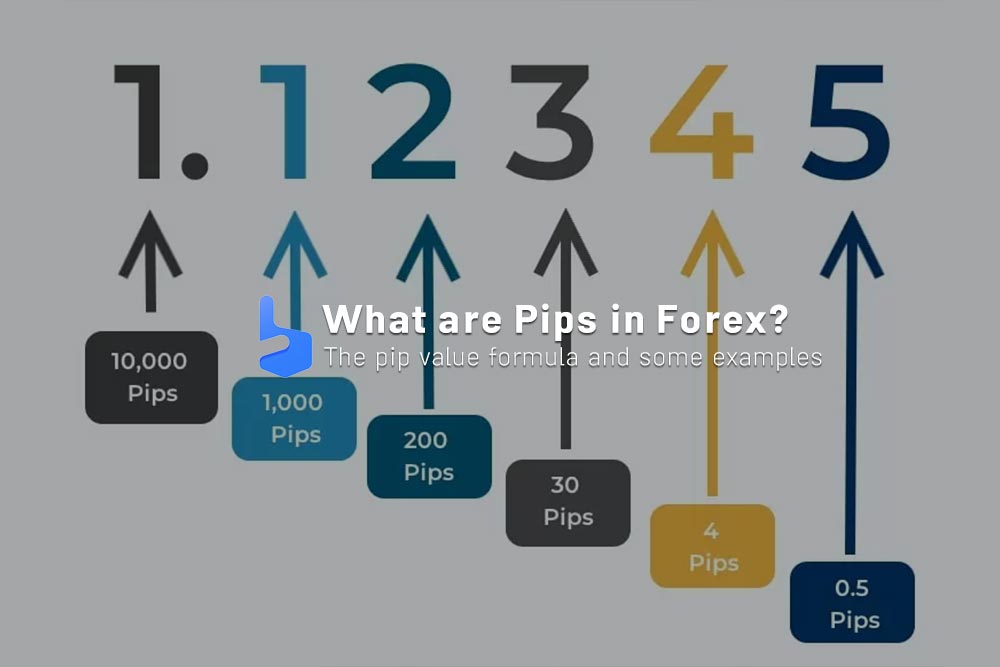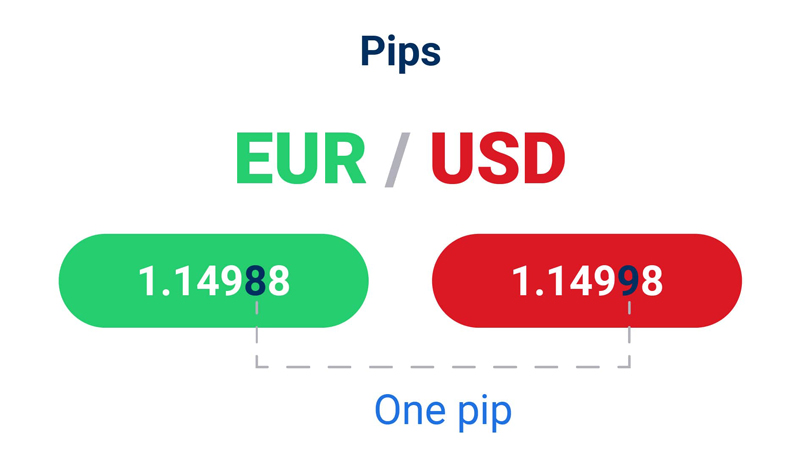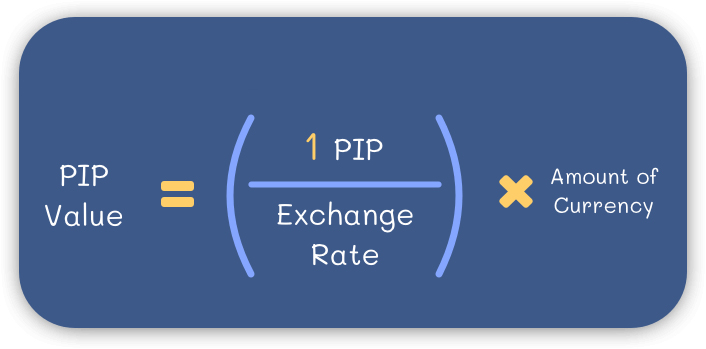What you are about to read:
In the complex world of Forex trading, success lies in the ability to understand the intricacies of price movements. Among the various terms used by Forex traders, the “pip in forex” stands out as a fundamental unit of measurement and is one of the basic concepts in Forex education. This term stands for “Percentage in Point,” and it plays a crucial role in analyzing market fluctuations, determining profits and losses, and executing precise strategies.
Whether you are an experienced trader or a beginner exploring the world of Forex, understanding pips in forex is essential. In this article from Brokerland, we will explore the nature of this concept in Forex, examining its meaning, calculation of pip value, and practical impacts on successful trading.
What is a Pip in Forex?
In Forex trading, a pip is the smallest price change in the last decimal point. Considering that most major currency pairs, such as those involving USD, EUR, and GBP, have prices displayed up to four decimal places, one pip in Forex represents a price movement of 0.0001.
For example, if GBP/USD moves from 1.4000 to 1.4001, one pip has been displaced. In contrast, currency pairs using the Japanese Yen (JPY) are only displayed with two decimal places. In this case, one pip represents a price movement of 0.01. For instance, if GBP/JPY moves from 150.00 to 150.05, five pips have been displaced.
You can trade in the Forex market through financial instruments such as CFDs and currency pairs. This involves opening positions based on the prediction of one currency strengthening against another. For every pip in Forex, representing a change in the value of a currency, depending on the market’s direction, there will be either profit or loss for the trader.
How to Use Pips in Forex
If a trader enters a long (buy) position on GBP/USD at 1.5000 and it reaches 1.5040, the price has moved 40 pips in favor of the trader, potentially resulting in a profit upon closing the trade. On the other hand, if a trader takes a long position on GBP/USD at 1.5000 and the exchange rate drops to 1.4960, the price has moved 40 pips against the trader, potentially leading to a loss when closing the trade.
Similarly, if a trader goes long on GBP/JPY at 145.00 and it reaches 145.75, the price has moved 75 pips in favor of the trader. If the exchange rate moves against the trader and drops to 144.25, the price has moved 75 pips against the trader, resulting in a loss.
In Forex, pips, in addition to measuring price movements and profits and losses, are useful for risk management, calculating the risk/reward ratio in trades, and determining the appropriate leverage or margin for effective use. For example, a trader can use a stop-loss to determine the maximum amount they are willing to lose in terms of pips in a trade. Having a stop-loss helps limit losses and prevents margin calls.
Note that the value of a stop-loss, in relation to its impact on margin and account balance, varies among different Forex brokers. When choosing the best Forex broker to open an account, be sure to pay attention to this. Also, always use appropriate stop-loss to prevent drawdowns and margin calls in your trades. For instance, the stop-out level in an ECN account with the Amarkets broker is 40%.
Calculating Position Size
Now that we understand what pips are in Forex, let’s see how we can use them to calculate the size of our positions. Pips in forex can be used to calculate position size in trades. If a trader’s trade volume is too large and incurs significant losses, their capital may be at risk. Therefore, trading with an appropriate position size (proper position size) is essential, even when engaged in prop trading and not using personal capital. It’s crucial to consider this seriously.
There are several steps to calculate position size or trade volume:
- Determine Risk Percentage: Decide the amount of capital to risk in each trade, considering the risk-to-reward ratio. For example, if it’s 1% per trade, a trader can potentially make at least 100 trades before depleting their capital. If the trading account has a balance of $5000 and the trader is willing to risk 1% per trade, it equals $50 per trade.
- Set Stop-Loss in Pips: Traders can set a stop-loss in pips. For instance, if a trader goes long on EUR/USD at 1.3600, they might set a stop-loss at 1.3550, which is 50 pips.
- Determine Trade Size: The final step depends on the size of forex lots traded. Standard lots refer to 100,000 units of the base currency, equivalent to $10 per pip movement in Forex. Mini lots are 10,000 units ($1 per pip), and micro lots are 1,000 units ($0.10 per pip).
For example, if a trader risks 1% of their $5000 balance per trade for a micro lot (risking $0.10 per pip), the trade volume would be $50 / (50 pips * $0.10) = 10 micro lots.
What is Pip Value in Forex?
The profit or loss generated by a pip movement depends on the value of each pip in Forex. To calculate pip value, you need to know three things: the currency pair traded, the trade volume, and the current price.
Pip Value Formula
The formula to calculate this value in Forex is:
Examples of Calculating Pip Value in Forex
Example 1: A trader opens a long position of $100,000 on USD/CAD at 1.0548.
USD/CAD rises to 1.0568, resulting in a 20-pip profit.
PipValue in USD: 1.0568=$9.46(0.0001X100,000)
To calculate the profit or loss of a trade, multiply the obtained pip count by the value of each pip.
In this example, the trader earned a profit of $189.20 by multiplying 20 pips by $9.46 each.
Example 2: A trader opens a long position of $10,000 on USD/CAD at 1.0570.
USD/CAD falls to 1.0540, resulting in a 30-pip loss.
PipValue in USD: 1.0540=$0.94(0.0001X10,000)
In this example, the trader incurred a loss of $28.20 by multiplying 30 by $0.94.
Understanding pip value is crucial for effective risk management and maximizing profits in Forex trading.
Pip Value Calculator in MetaTrader 4
Calculating the value of pip in Forex can be time-consuming and challenging, especially when some traders prefer focusing on refining and upgrading their Forex trading strategies. For this reason, a pip value calculator has been developed for MetaTrader 4 to perform these calculations for traders.
Although MetaTrader 4 is just one example of the many platforms and software for Forex trading that offer pip calculators, others like TradingView, which we discussed in previous articles, or MyFXBook, are also examples.
It’s essential to note that not all trading platforms and software may provide this feature, so traders should check with their Forex broker or platform provider to see if this feature is available. For instance, LiteForex offers Fibonacci indicator calculators and profit/loss calculators for traders but does not provide a pip calculator. Additionally, traders should always review their calculations for value or pip in Forex to ensure accuracy and prevent costly mistakes.
Factors Affecting Value of Pips in Forex
Several factors can influence the value of pips in Forex, such as fluctuations in the traded currency pair, trade volume, and the base currency used in the trading account.
Fluctuations: Currency pairs with higher volatility tend to have more substantial pip movements, meaning the pip value in Forex can be higher. For instance, if the EUR/USD pair experiences high volatility, a one-pip move can be worth more than $8.10.
Trade Volume: The pip-value in Forex is directly proportional to the size of the position. Larger trades have a higher value, while smaller trades have a lower value.
Base Currency: The currency in which the trading account is denominated can also impact the pip value in Forex. If the account is denominated in a currency other than the base currency of the traded pair, the value will differ. For example, if a trader with a USD account is trading the EUR/USD pair, the value will be different from a trader with a EUR account trading the same pair.
Summary
Traders use pips in Forex to measure price movements and assess profits and losses. Now that we understand what a pip is in Forex, we know that pips play a crucial role in risk management. For example, a trader can set a stop-loss for a trade in terms of pips, limiting potential losses and avoiding a costly stop-out in a losing trade.
Pip in Forex can help traders calculate the most appropriate trade volume to ensure they don’t expose themselves to excessive risk by opening positions with significant potential losses.












